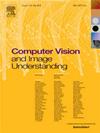A semantic segmentation method integrated convolutional nonlinear spiking neural model with Transformer
IF 4.3
3区 计算机科学
Q2 COMPUTER SCIENCE, ARTIFICIAL INTELLIGENCE
引用次数: 0
Abstract
Semantic segmentation is a critical task in computer vision, with significant applications in areas like autonomous driving and medical imaging. Transformer-based methods have gained considerable attention recently because of their strength in capturing global information. However, these methods often sacrifice detailed information due to the lack of mechanisms for local interactions. Similarly, convolutional neural network (CNN) methods struggle to capture global context due to the inherent limitations of convolutional kernels. To overcome these challenges, this paper introduces a novel Transformer-based semantic segmentation method called NSNPFormer, which leverages the nonlinear spiking neural P (NSNP) system—a computational model inspired by the spiking mechanisms of biological neurons. The NSNPFormer employs an encoding–decoding structure with two convolutional NSNP components and a residual connection channel. The convolutional NSNP components facilitate nonlinear local feature extraction and block-level feature fusion. Meanwhile, the residual connection channel helps prevent the loss of feature information during the decoding process. Evaluations on the ADE20K and Pascal Context datasets show that NSNPFormer achieves mIoU scores of 53.7 and 58.06, respectively, highlighting its effectiveness in semantic segmentation tasks.
将卷积非线性尖峰神经模型与变压器整合在一起的语义分割方法
语义分割是计算机视觉中的一项关键任务,在自动驾驶和医学成像等领域有着重要应用。基于变换器的方法因其在捕捉全局信息方面的优势而在最近获得了广泛关注。然而,由于缺乏局部交互机制,这些方法往往会牺牲细节信息。同样,由于卷积核的固有局限性,卷积神经网络(CNN)方法也难以捕捉全局上下文。为了克服这些挑战,本文介绍了一种名为 NSNPFormer 的基于 Transformer 的新型语义分割方法,该方法利用了非线性尖峰神经 P(NSNP)系统--一种受生物神经元尖峰机制启发的计算模型。NSNPFormer 采用的编码-解码结构包含两个卷积 NSNP 组件和一个残差连接通道。卷积 NSNP 组件有助于非线性局部特征提取和块级特征融合。同时,残差连接通道有助于防止在解码过程中丢失特征信息。在 ADE20K 和 Pascal Context 数据集上进行的评估表明,NSNPFormer 的 mIoU 分数分别达到了 53.7 和 58.06,突出了它在语义分割任务中的有效性。
本文章由计算机程序翻译,如有差异,请以英文原文为准。
求助全文
约1分钟内获得全文
求助全文
来源期刊

Computer Vision and Image Understanding
工程技术-工程:电子与电气
CiteScore
7.80
自引率
4.40%
发文量
112
审稿时长
79 days
期刊介绍:
The central focus of this journal is the computer analysis of pictorial information. Computer Vision and Image Understanding publishes papers covering all aspects of image analysis from the low-level, iconic processes of early vision to the high-level, symbolic processes of recognition and interpretation. A wide range of topics in the image understanding area is covered, including papers offering insights that differ from predominant views.
Research Areas Include:
• Theory
• Early vision
• Data structures and representations
• Shape
• Range
• Motion
• Matching and recognition
• Architecture and languages
• Vision systems
 求助内容:
求助内容: 应助结果提醒方式:
应助结果提醒方式:


